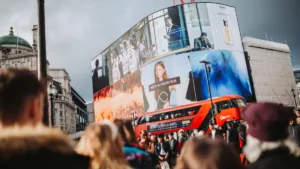By Damien Mahoney, Chief Strategy Officer at Nosto, the commerce experience platform
As the downturn bites, digital marketers must ensure that every pound they spend is driving results. That means being smarter with the resources they have, while continuing to deliver marketing that packs creativity and punch. One tactic that fits both criteria is interweaving more customer-generated photos and videos alongside professionally produced brand imagery—whether that’s in ads, organic campaigns or across web pages.
For consumer brands, adding visual user-generated content (UGC) to the digital marketing mix is the perfect tactic for four key reasons.
It delivers the authenticity consumers are looking for
88% of respondents to a Nosto/Stackla survey said authenticity is important in deciding which brands they like and support—and that includes the imagery. Polished brand content, such as obviously staged images and air-brushed videos are out. On the likes of Instagram and TikTok, it’s authentic content from other users that attracts most interactions.
BeReal has become Gen Z’s favourite social media app by getting users to post unfiltered, in-the-moment snapshots of their lives. Brands can tap into this trend for authenticity by leaning into visual UGC. What’s more authentic than positive images and content shared by a brand’s customers?
It helps drive customer insights and new creative ideas
One of marketing’s key roles is to get to know their customers intimately in order to better hone brand messaging and fuel creativity. Analysing UGC provides a unique snapshot of how customers perceive the brand which can supplement traditional consumer research such as customer focus groups (while costing far less).
By tracking the images and videos shared by customers on social media, for example, a fashion brand can see which of its outfits are trending, why people like them, and what other clothes and accessories they are pairing things with. Images from customers—many of whom relish the opportunity to be seen as creators—can also give brands inspiration and fresh ideas about how to showcase their fashion lines in professional photo-shoots and campaigns.
In the travel sector, where visual content is so important, hotel brands can use customer imagery to understand which aspects of their hotel properties and surrounding beauty spots guests are attracted to. Often, this highlights things never considered by the brand itself and provides clues about images and locations to incorporate in its wider marketing.
The beauty of the ideas inspired by visual UGC is that they come direct from the customer, naturally aligning with what a brand and its products mean to them.
It is cost-effective
The demand for original, good quality content to drive digital marketing is relentless. You can’t get away with using the same visual assets as image fatigue will soon set in.
Production budgets for professional photos and videos, however, can account for a big slice of customer acquisition costs. And brands are realising that they can tackle this by supplementing professional imagery with that created by customers.
Visual UGC can be available at very low (or even no) cost using platforms to identify relevant content and to streamline the process of securing image rights. Brands are reaching out to customers who are already creating and sharing content on social media with rewards and discounts to do more. Some are even more proactive—approaching certain creators with specific creative briefs to help channel their ideas.
It provides much-needed social proof that drives conversions
Whether it’s booking a hotel or buying new clothes online, consumers want reassurance and proof that a purchase is going to meet expectations – even more so when economic conditions are tight.
And rather than big name influencers who earn large sums in exchange for sharing positive content, consumers are relying on the authentic social proof of fellow customers or micro influencers.
Fashion shoppers want to see how an outfit looks on real people from selfies shared by other customers. And holidaymakers want to get a reality check of what a resort’s really like based on the Instagram photos from guests who’ve stayed there.
With money so tight, the social proof delivered through UGC could mean the difference between a sale and another abandoned cart at the checkout.
What about loss of control?
One worry about UGC is the lack of brand control. Though remember, customers are already sharing images and content about brands and their products; why shouldn’t marketers re-use some of these to their advantage?
Of course, not everything a customer shares will be re-usable—then there’s the worry about time spent finding what is. But there are platforms that use the likes of visual recognition and machine learning technology to automate that process, helping you identify and curate the best content across social networks, to leverage UGC at scale.
All of this means that now is the time for consumer-focused brands to look at increasing the role of visual UGC within their digital marketing.









